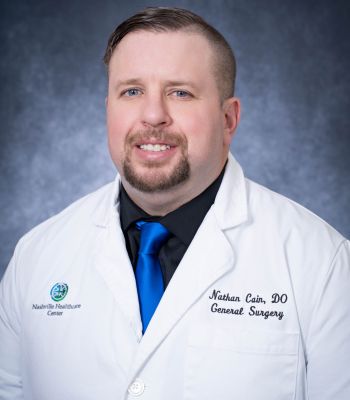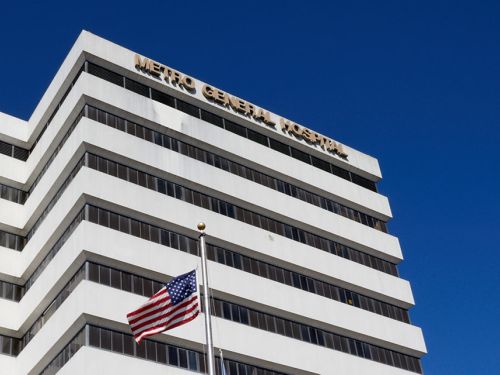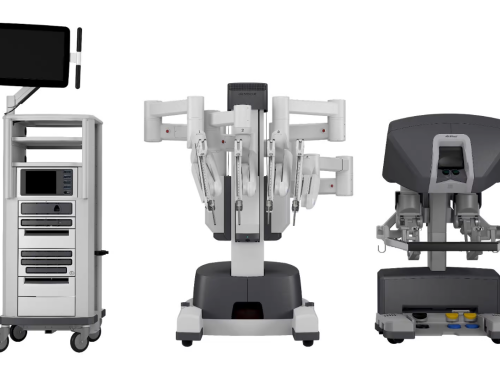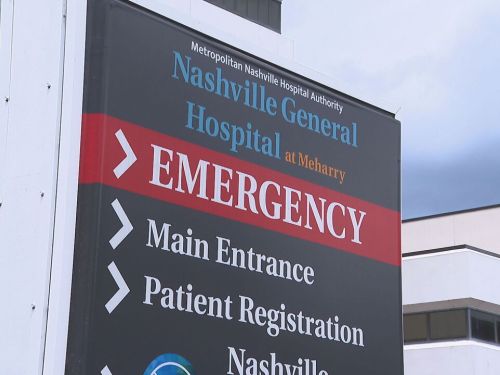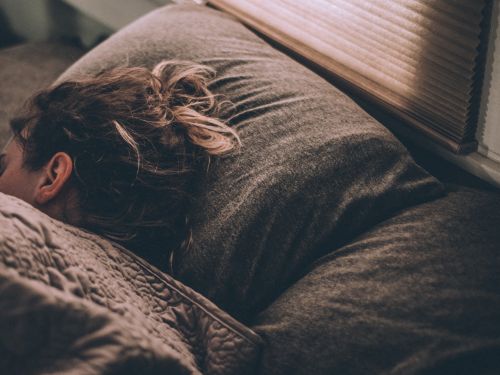General Surgery
Expert surgical care, with advanced techniques and a compassionate touch.
Our General Surgeons treat a wide range of surgical conditions — providing compassionate care as well as comprehensive diagnosis and treatment. Our surgeons are experts in managing diseases of the digestive tract, breast, and endocrine system, as well as surgical oncology (the surgical treatment of cancers and cancerous tumors). They also provide a number of minimally-invasive surgical procedures.
Common Surgeries We Perform:
- Robotic/Laparoscopic hernia repairs (abdominal, inguinal, incisional, etc)
- Robotic/Laparoscopic cholecystectomy
- Robotic/Laparoscopic appendectomy
- Excision of soft tissue mass(es)
- Bowel resection
- Robotic/Laparoscopic Hiatal Hernia repair
- Incision and drainage of abscess
- Breast Surgery (lump excision, mastectomy, removal of implants)
- Parathyroid/Thyroidectomies
Conditions We Treat
Abscess
What is an abscess? An abscess (boil) is a common type of skin and soft tissue infection. It is a pocket of pus within the tissue just below the skin that can form anywhere on or in your body. Often accompanied by surrounding skin redness, swelling, and warmth (cellulitis).
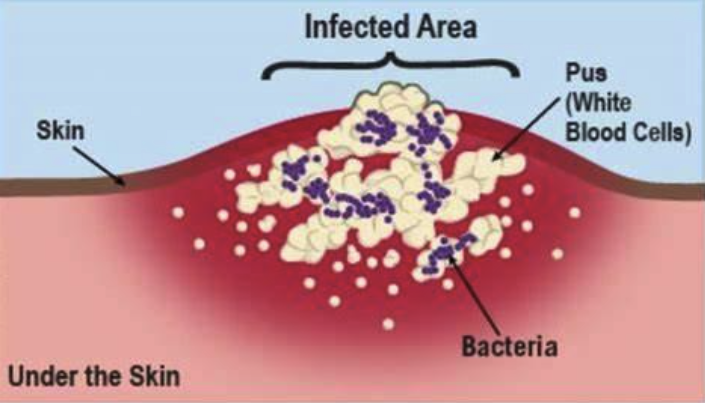
How is an abscess diagnosed? Usually diagnosed by physical exam, but an ultrasound or CT scan may be needed.
How is an abscess treated? Some can be treated with antibiotics, while others may require surgical drainage.
When should I seek immediate care?
- Severe pain at the site of abscess
- Fever
When should I call my doctor?
- Fever or chills.
- The skin around the abscess is very red and warm.
- Abscess is growing larger.
- You have questions or concerns about your condition or care.
Non-cancerous and Cancerous Breast Disease
If you have new onset breast pain, breast lump, nipple discharge, or nipple retraction, consider making an appointment. All women starting at age 40 should have a yearly screening mammogram. You can schedule your mammogram here, no referral needed.
Colon Mass
A mass in your colon (large intestine) is commonly found on colonoscopy. Please remember all individuals should have a screening colonoscopy starting at age 45. You can make an appointment with our GI clinic to get your colonoscopy scheduled.
Gallbladder Disease
What is the gallbladder? The gallbladder is a small, pear-shaped organ that is tucked under your liver. It stores bile, a fluid that helps the body break down fat. Normally, the gallbladder fills with bile between meals. Then, when you eat fatty foods, the gallbladder empties the bile into the intestine.
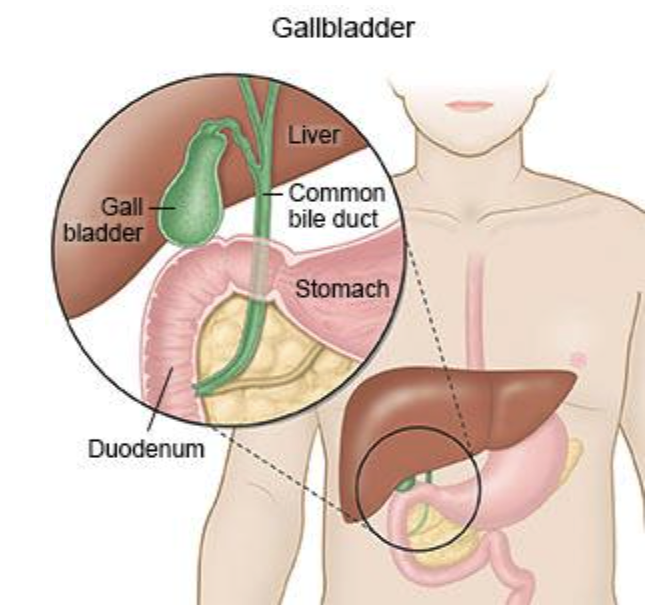
What is a gallbladder infection (Cholecystitis)? Cholecystitis is inflammation of your gallbladder. Your gallbladder becomes inflamed if it is not able to release bile. You may have sudden & severe symptoms (acute cholecystitis) or mild symptoms over a period of time (chronic cholecystitis).
What causes cholecystitis?
- Gallstones (most common)
- Gallbladder damage from surgery or illness
- A bacterial infection
- Narrowing of the bile duct (bile flows from your gallbladder to your intestine through the bile duct)
- One or more tumors
What increases my risk for cholecystitis?
- Age older than 40
- Being female or pregnant
- Obesity
- A high-fat diet or total parenteral nutrition (TPN)
- Certain conditions such as diabetes or HIV
- Rapid weight loss, naturally or with use medications such as Mounjaro, Ozempic and Wegovy
What are the signs and symptoms of cholecystitis?
- Pain in your upper right abdomen, often after you eat a big meal with fatty foods
- Pain that moves to your shoulder or back
- Fever or chills
- Nausea or vomiting
How is cholecystitis diagnosed? Your healthcare provider will ask you about your signs and symptoms. Your provider will press on your abdomen to find out where it hurts. You may also need any of the following:
- Blood and urine tests may show infection or liver damage.
- An ultrasound or CT may show one or more gallstones. You may be given contrast liquid to help the gallbladder show up better in the pictures. Tell the healthcare provider if you have ever had an allergic reaction to contrast liquid.
How is cholecystitis treated? Treatment depends on whether your cholecystitis is mild, moderate, or severe.
- Medicines may be used to treat or prevent pain or a bacterial infection.
- Surgery is done to remove your gallbladder. If you are not able to have surgery, bile may be drained over several days or weeks through a tube.
When should I seek immediate care?
- You have severe pain in your abdomen.
- You cannot stop vomiting.
When should I call my doctor?
- You have a fever or chills.
- Your skin or the whites of your eyes turn yellow.
- You have questions or concerns about your condition or care.
Gallstones
What is the gallbladder? The gallbladder is a small, pear-shaped organ that is tucked under your liver. It stores bile, a fluid that helps the body break down fat. Normally, the gallbladder fills with bile between meals. Then, when you eat fatty foods, the gallbladder empties the bile into the intestine.
What are gallstones? Gallstones are hard stones of varying size that form in your gallbladder or bile duct. There is no clear reason why these form. These stones can clog the gallbladder and keep it from draining or just irritate the gallbladder. If the gallstones are pushed out of the gallbladder, they can keep the liver or pancreas from draining.
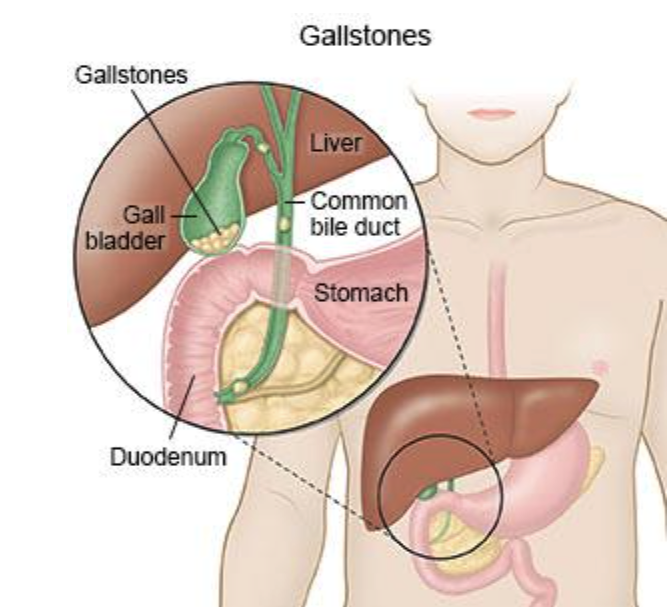
What causes gallstones? Gallstones develop when your gallbladder does not empty correctly. Stones can form from different bile materials. The following may increase your risk:
- Obesity or not enough physical activity
- Pregnancy
- A family history of gallstones
- A health condition such as diabetes, cirrhosis, or nonalcoholic fatty liver disease
- Rapid weight loss
- Surgery on your intestines
- Certain medicines, such as estrogen, antibiotics, cholesterol-lowering medicines and weight loss medicines (Mounjaro, Ozempic, Wegovy, etc.)
What are symptoms of gallstones? In most cases, gallstones do not cause symptoms. However, if gallstones cause symptoms, they typically cause:
- Belly pain in the right upper abdomen, usually just below the ribcage (most common)
- Pain in right shoulder and/or back
- Nausea and vomiting
- Bloating
- Dark urine
Pain can be worse after fried/fatty meals. If you do not have symptoms, you likely will not need treatment. If you do have symptoms, we recommend treatment. Note, that these symptoms can come and go but often get worse as time progresses.
Is there a test for gallstones? Yes, we can find out if you have gallstones by doing an imaging test, such as an ultrasound. An ultrasound is a painless test that uses sound waves to create a picture of your gallbladder.
How are gallstones diagnosed? Ultrasound pictures may be used to check for gallstones. If these tests do not show clear signs of gallstones, you may need a test that uses contrast liquid. Examples include:
- A gallbladder scan (MRI MRCP)
- Endoscopic retrograde cholangiopancreatography (ERCP)
For any of these tests, tell your healthcare provider if you have ever had an allergic reaction to contrast liquid. If you are a woman, tell your healthcare provider if there is a chance you may be pregnant.
How are gallstones treated? You may not need treatment if you do not have signs or symptoms. Your healthcare provider may want to monitor the gallstones over time. If you are having symptoms, there are generally 2 treatment options:
- Nonsurgical: Avoid trigger foods such as fried, fatty and spicy foods.
- Surgery: This is a common and routine procedure that does involve anesthesia to remove the gallbladder. Please see cholecystectomy for more information.
What can I do to manage or prevent gallstones?
Eat a variety of healthy foods. This may help you have more energy and heal faster. Healthy foods include fruits, vegetables, whole-grain breads, low-fat dairy products, beans, lean meat, and fish. Ask if you need to be on a special diet. Try to eat regular meals during the day. This will help your gallbladder empty.
Exercise as directed. Talk to your healthcare provider about the best exercise plan for you. Exercise can help you lose weight and improve your health.
Manage your weight. If you are overweight, it is important to reach a healthy weight. You will need to lose weight slowly because rapid weight loss can increase your risk for gallstones. Talk to your healthcare provider about your weight. He or she can help you create a safe weight loss plan if you need to lose weight.
When should I seek immediate care?
- You have a fever and chills.
- Your eyes or skin turn yellow.
- You have severe pain in your upper abdomen, just below the right ribcage.
When should I call my doctor?
- You have nausea and are vomiting.
- Your urine is dark.
- You have clay-colored bowel movements.
- You have questions or concerns about your condition or care.
Hemorrhoids
What are hemorrhoids? Hemorrhoids are swollen veins in the rectum. These are very common.
- Internal hemorrhoids: are found inside your rectum and may protrude out
- External hemorrhoids: are found outside your rectum.
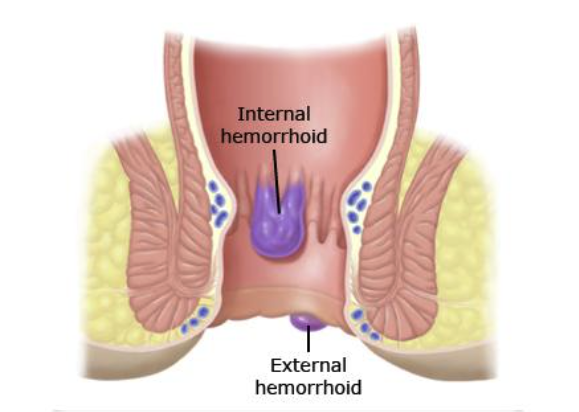
What are the symptoms of hemorrhoids? In some cases, you can see or feel hemorrhoids around the outside of the anus. Hemorrhoids do not always cause symptoms but when they do, they can include:
- Itching of the skin around the anus
- Painless rectal bleeding. You may see bright red blood after using the toilet.
- Pain
- Tissue bulging/swelling around the anus
How are hemorrhoids diagnosed? Hemorrhoids are often diagnosed by patient history and physical exam. In some cases, they are noted on colonoscopy.
What is the treatment for hemorrhoids? There are many nonsurgical treatment options available which are usually managed by your Primary Care doctor. If those fail, then surgical excision called hemorrhoidectomy can be performed.
When should I call my doctor?
- New or increased bleeding from your rectum.
- Tissue sticking out from your rectum that you can't push back in.
- Not able to pass bowel movements because of pain.
- Symptoms are getting worse even with home care.
- Fever of 100.4°F (38°C) or higher.
Hiatal Hernia
What is a hiatal hernia? A hiatal hernia occurs when part of the stomach moves up into the chest area. Normally, the stomach sits below the diaphragm. The diaphragm is the muscle layer that separates the organs in the chest from those in the belly. The esophagus, the tube that carries food from your mouth to your stomach, passes through a hole in the diaphragm. If you have a hiatal hernia, the stomach and possibly other organs push up through that hole.
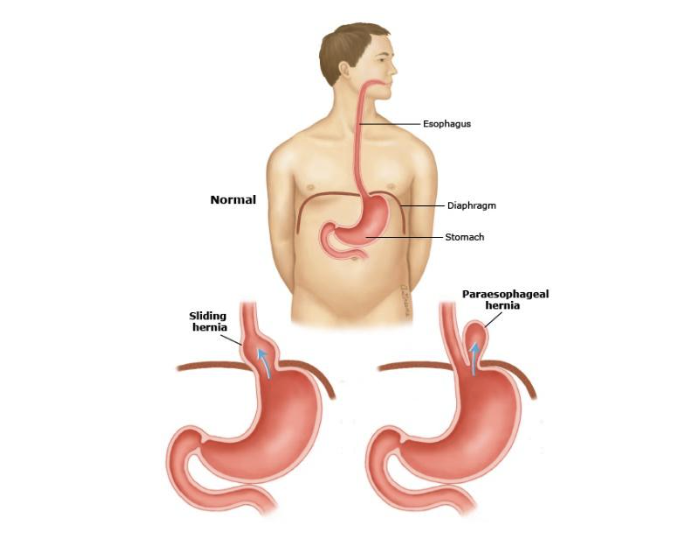
What are the symptoms of a hiatal hernia? A hiatal hernia can cause acid to be pushed up into the esophagus, leading to acid reflux or GERD. Symptoms can include:
- Burning in the chest, known as heartburn
- Burning in the throat or an acid taste in the mouth
- Stomach or chest pain
- Trouble swallowing
- Raspy voice or sore throat
- Unexplained cough
How is a hiatal hernia diagnosed? Many patients discover they have a hiatal hernia when undergoing tests to diagnose other symptoms. It can be identified through imaging tests such as a CT scan of the abdomen or an upper endoscopy, where a tiny camera is passed down the throat to examine the esophagus and stomach.
How is a hiatal hernia treated? Symptoms of a hiatal hernia can sometimes be managed with medications or corrected with surgery.
Your surgeon will pull the stomach back down and repair the hole in the diaphragm. This prevents the stomach from sliding up again. A procedure to prevent heartburn is often performed at the same time.
Inguinal Hernia
What is an inguinal hernia? An inguinal hernia, also known as a groin hernia, occurs when there is a weakness or gap in the muscle layer. This allows tissue that is normally contained by the muscle to push through, creating a bulge. It typically occurs in the groin area, between the lower abdomen and the thigh. Inguinal hernias are more common in men.
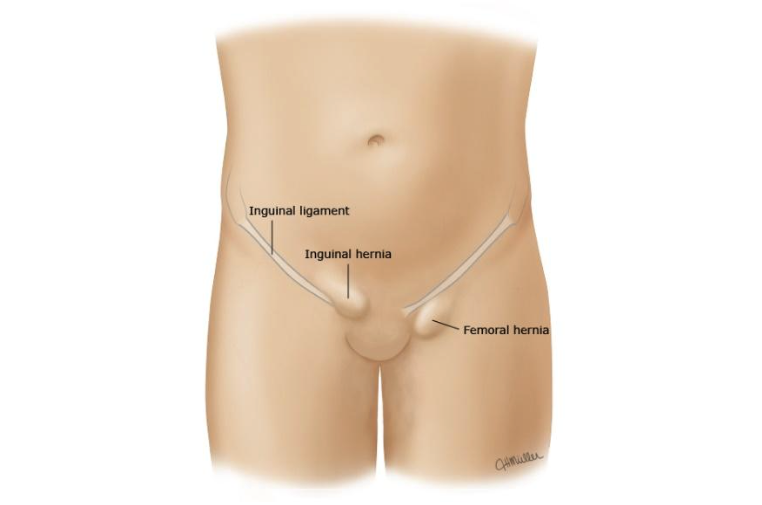
What are symptoms of an inguinal hernia? These do not always cause symptoms but when they do, they can include:
- Bulge or lump at the groin. This bulge can be so small that you don't even realize it's there.
- Straining when coughing or having a bowel movement can make a hernia look bigger
- Lying down overnight can make the hernia look smaller, or even disappear, in the morning
- Heavy or tugging feeling in the groin area
- Dull pain that gets worse when straining, lifting, coughing, or otherwise using the muscles near the groin
How is an inguinal hernia diagnosed? Inguinal hernias are often diagnosed by patient history and physical exam. Providers can use either a CT (CAT) scan or ultrasound to confirm diagnosis if needed.
What is the treatment for an inguinal hernia? Most commonly, inguinal hernias are treated with surgery. Your surgeon will close the hernia either by pulling the muscles at the edge of the hernia together with stitches (sutures) or by placing synthetic mesh material over the defect. Your surgeon can repair it with an open incision or with minimally invasive surgery. These options would be discussed at your clinic visit.
When should I seek immediate care? All hernias can balloon out and form a sac. That sac can hold a loop of intestine or a piece of fat that should normally be tucked inside of the belly. This can be painful and even dangerous if the tissue in the hernia gets trapped and unable to slide back into the belly. When this happens, the tissue does not get enough blood, so it can become swollen or even die, which is a medical emergency. Symptoms of a strangulated inguinal hernia include:
- If you can no longer “reduce” or push the hernia back in
- Severe pain and/or redness
- Nausea or vomiting if part of the intestine is blocked in the hernia
- Fever
- Rapid heart rate
Pilonidal Cyst
What is a pilonidal cyst? A pilonidal cyst is a fluid-filled sac that forms just above the crease where the buttocks meet. These cysts are often associated with hair growth in the area and may develop due to irritation, pressure, or ingrown hairs.
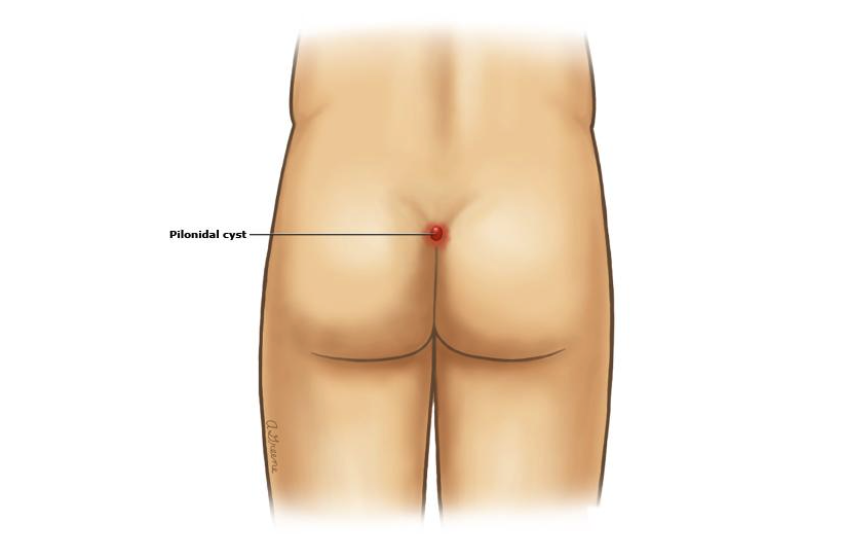
What are symptoms of a pilonidal cyst? If the cyst is not infected, it might not cause symptoms. The cyst can become red, swollen and infected. The pain can make it uncomfortable to sit or lie back. In some cases, the cyst might burst and drain fluid, blood, or pus (a milky yellow or green fluid).
How is a pilonidal cyst diagnosed? A pilonidal cyst is often diagnosed by patient history and physical exam. No imaging or laboratory studies are necessary.
What is the treatment for a pilonidal cyst? When the cyst causes symptoms, surgical intervention is recommended.
- Infected: Incision and drainage is recommended. This involves numbing the area then opening the cyst to drain the fluid and wash it out. The open area is then packed with gauze. After the cut has healed, return to your surgeon to discuss next steps.
- Not infected: It is recommended to completely remove the cyst when it is not actively infected to prevent recurrence. This is completed in the operating room and involves completely removing the cyst rather than just cutting it open. The wound might be closed or left open. You will need to see your doctor regularly after surgery to check how the area is healing.
Ventral Hernias
What is a ventral hernia? A ventral or abdominal hernia is when there is a bulge of intestine or other tissue through a weakness or gap in the abdominal wall. The abdominal wall is made up of muscle and tissues that attach those muscles to each other and to bone. These provide strength to the abdominal wall to hold all the contents of the abdominal cavity inside. There are a few types of ventral hernias: incisional, umbilical (belly button), epigastric (upper abdomen).
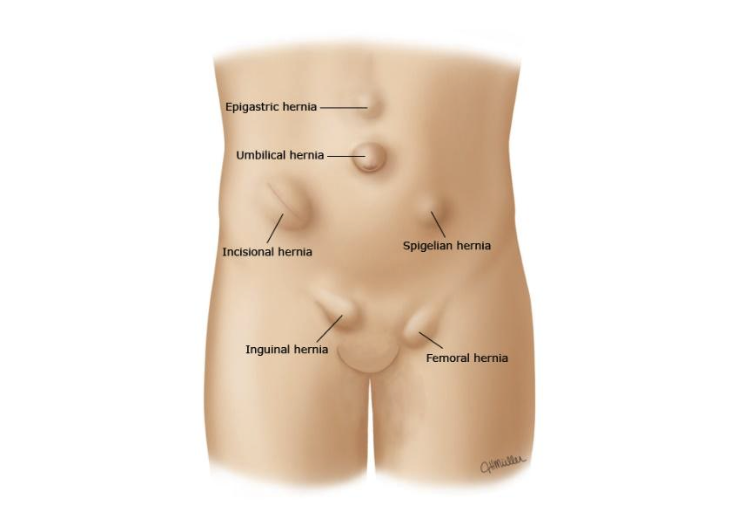
What are symptoms of a ventral hernia? The size of the bulge can change depending on how much pressure is put on the abdominal wall. These do not always cause symptoms but when they do, they can include:
- A bulge somewhere on the abdomen – This bulge can be so small that you don't even realize it's there.
- Straining when coughing or having a bowel movement can make a hernia look bigger
- Lying down overnight can make the hernia look smaller, or even disappear, in the morning
- Heavy or tugging feeling around the bulge
- Dull pain that gets worse when straining, lifting, coughing, or otherwise using the nearby muscles
How is a ventral hernia diagnosed? Hernias are often diagnosed by patient history and physical exam. Providers can use a CT (CAT) scan to confirm diagnosis if needed.
What is the treatment for ventral hernia? Most commonly, ventral hernias are treated with surgery. Your surgeon will close the hernia either by pulling the muscles at the edge of the hernia together with stitches (sutures) or by placing synthetic mesh material over the defect. Your surgeon can repair it with an open incision or with minimally invasive surgery. These options would be discussed at your clinic visit.
When should I seek immediate care? All hernias can balloon out and form a sac. That sac can hold a loop of intestine or a piece of fat that should normally be tucked inside of the belly. This can be painful and even dangerous if the tissue in the hernia gets trapped and unable to slide back into the belly. When this happens, the tissue does not get enough blood, so it can become swollen or even die, which is a medical emergency. Symptoms of a strangulated inguinal hernia include:
- If you can no longer “reduce” or push the hernia back in
- Severe pain and/or redness
- Nausea or vomiting if part of the intestine is blocked in the hernia
- Fever
- Rapid heart rate
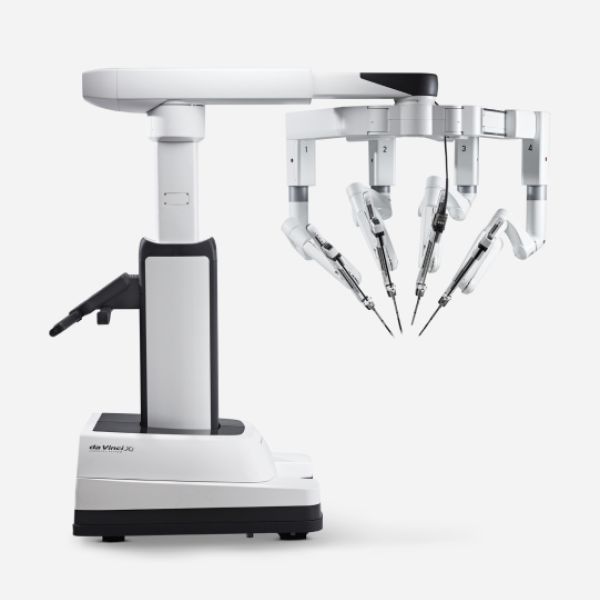
Advancing Surgery Through Robotics
Nashville General Hospital is proud to offer state-of-the-art robotic-assisted surgery — a new era of minimally invasive care that enhances precision, reduces recovery time, and improves patient outcomes. Led by experienced surgeons, our robotic program delivers innovative treatment options with fewer complications and faster healing.
Locations
General Surgery Main
Providers
Providers
Related Articles
Related Articles
Now relocated: ENT, Rheumatology, Endoscopy, Pulmonary, and General Surgery clinics — all still on our Main Campus for your convenience.
Advanced Technology Aims to Reduce Health Inequities in Nashville Community
- Tennessee Health Facilities Commission granted NGH’s request for enhanced designation
- A good night’s sleep is one of the easiest ways to prepare for and recover from surgery. Sleep can help you stay healthy and your body heal.



